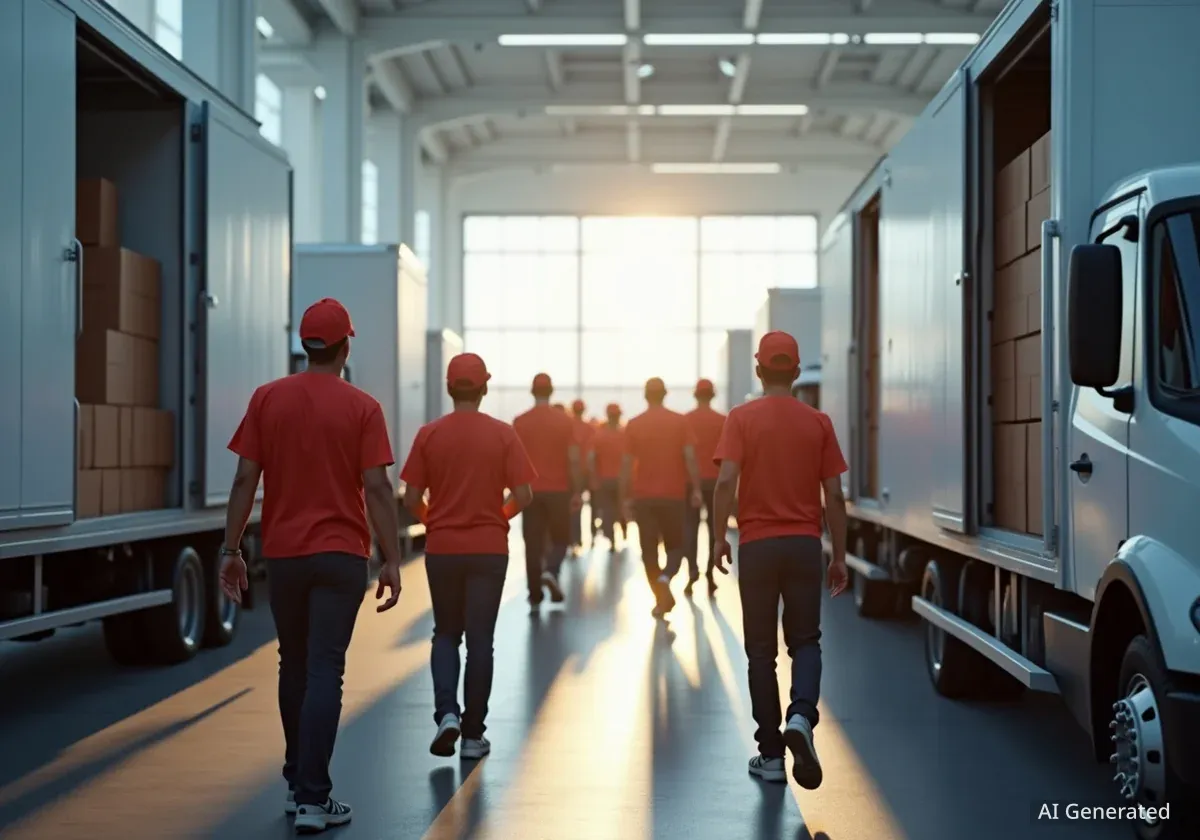Amazon has announced a new investment of $1.9 billion into its Delivery Service Partner (DSP) program. This funding is expected to help its independent delivery partners increase the national average pay for drivers to nearly $23 per hour. The latest commitment brings Amazon's total investment in the program to $16.7 billion since its launch seven years ago.
Key Takeaways
- Amazon is investing an additional $1.9 billion in its Delivery Service Partner (DSP) program.
- The investment is anticipated to help raise the national average driver pay to nearly $23 per hour.
- Total investment in the DSP program since 2018 now reaches $16.7 billion.
- The company is also using artificial intelligence to improve route safety and delivery efficiency, resulting in a 31% reduction in serious collisions over the past year.
Details on the New Investment and Driver Compensation
Amazon's latest financial commitment of $1.9 billion is aimed at strengthening the network of small businesses that handle last-mile deliveries. A primary goal of this funding is to support these partners in offering more competitive compensation to their drivers.
The company anticipates that this investment will enable DSPs to raise the average hourly wage for drivers across the United States to almost $23. However, the final pay rate will vary depending on the specific delivery partner and their geographic location. Many DSPs already offer wages above this projected national average.
This follows a trend of increasing compensation. According to Amazon, its investments over the past two years have helped DSPs achieve an average pay increase of 13% for their drivers. By providing higher rate cards to its partners, Amazon aims to help them attract and retain skilled employees, which is crucial for maintaining a reliable delivery network.
Program by the Numbers
- New Investment: $1.9 Billion
- Total Investment (since 2018): $16.7 Billion
- Projected Average Pay: Nearly $23 per hour
- Global Network Size: 4,500 small business owners
The Evolution of the Delivery Service Partner Program
Launched in 2018, the Delivery Service Partner program was created to empower entrepreneurs to start their own logistics companies. These small businesses operate as independent contractors, delivering packages for Amazon.
Over the past seven years, the program has expanded into a global network comprising 4,500 small business owners. These partners manage their own teams, fleets of vehicles, and day-to-day operations, creating local jobs and contributing to their communities.
Amazon provides DSPs with access to its technology, logistics experience, and a suite of exclusive deals on vehicles, insurance, and other business necessities. The program was designed to offer a lower-cost entry point into the logistics industry, with startup costs reported to be as low as $10,000.
Enhancing Safety and Efficiency with Artificial Intelligence
Alongside financial investments, Amazon is deploying artificial intelligence to improve both driver safety and the quality of its delivery services. The company has developed smarter routing technology that analyzes real-time traffic data and road conditions to generate safer and more efficient delivery routes.
Advanced Mapping and Route Correction
Amazon is using multi-modal AI, which combines satellite imagery, public information, and aggregated delivery success data to create a more accurate understanding of delivery locations. This helps prevent routing errors that could place drivers in unsafe situations.
When drivers encounter mapping issues, they can report them directly through their delivery application. Amazon's AI systems are designed to automatically process this feedback, allowing for rapid correction of map inaccuracies. This continuous improvement loop helps refine the system for all drivers.
Measurable Safety Improvements
The focus on AI-driven safety has produced tangible results. According to Amazon, over the last year, there has been a 31% reduction in serious collisions across its delivery network. Additionally, the company reported a 32% decrease in risky driving behaviors such as speeding and distracted driving.
AI also plays a role in overcoming language barriers. The system can automatically translate customer delivery instructions into more than 30 languages, ensuring drivers clearly understand specific drop-off requests regardless of their native language.
Community Engagement and Philanthropic Efforts
In 2023, Amazon and its partners launched the "Together, We Give" program, a philanthropic initiative focused on supporting the local communities where they operate. The program empowers hundreds of DSPs across the United States and Canada to contribute to local causes that are meaningful to them.
Supported initiatives have included disaster relief efforts, donations to local hospitals, and support for school districts. The program facilitates a collaborative approach to community investment between Amazon and its independent partners.
"This program has already empowered hundreds of DSPs across the U.S. and Canada to support meaningful local causes, including disaster relief efforts, local hospitals, and school districts."
Recent philanthropic activities highlight the program's impact. In a single recent month, the initiative collectively donated over $430,000 to various nonprofit organizations. As part of this effort, Amazon and its partners also provided school supplies to more than 60,000 students.
A significant contribution includes a $270,000 donation to Ronald McDonald House, with DSPs given the option to match the contribution or make independent donations to the charity. These efforts demonstrate a commitment that extends beyond logistics and into community-building.





